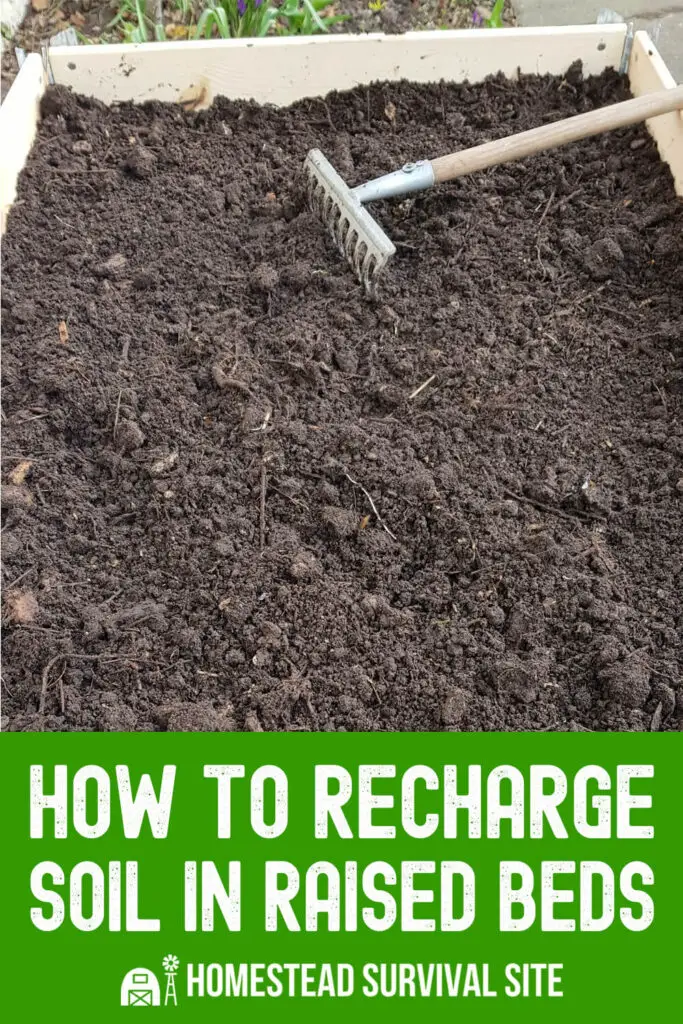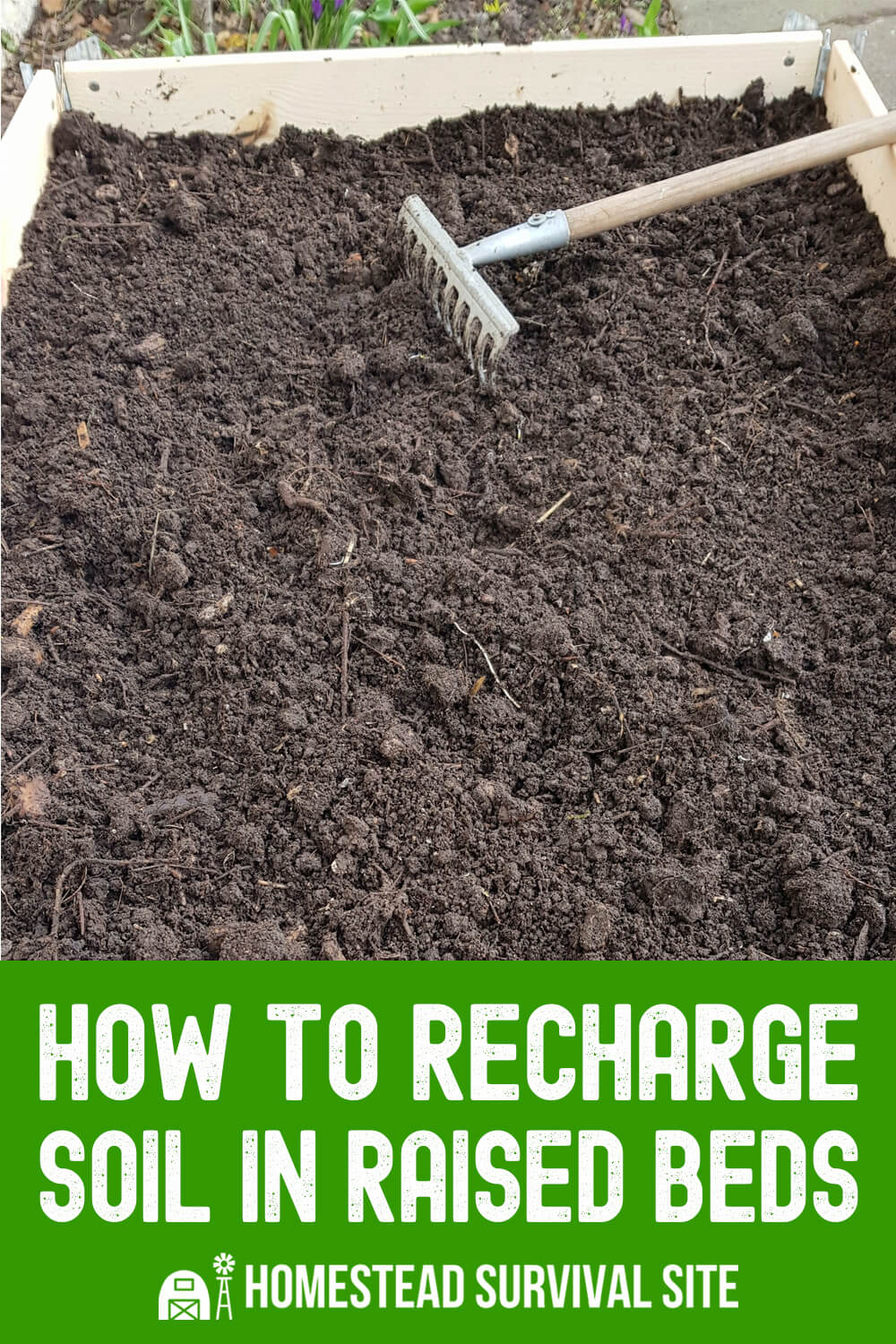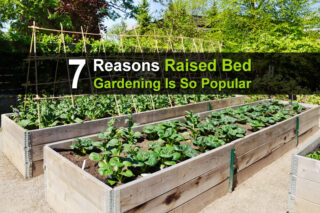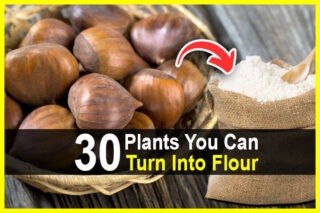Estimated reading time: 6 minutes

Planting a vegetable or flower garden in a raised bed has many benefits. Among them are maximized growing space, enhanced water control, pest protection, and a lengthened growing season.
However, a disadvantage is that the soil in a raised bed can become depleted more readily than ground soil.
Due to their confined space, raised beds have no means to replenish vital nutrients on their own. Without replenished nutrients, the health and production of your raised bed will diminish. Issues with pests and disease will increase, and plants will lack strong stems, roots, and foliage.
Here’s the good news. It’s easy to rejuvenate your raised beds. This article explains eight methods to help recharge the soil in raised beds.
Want to save this post for later? Click Here to Pin It On Pinterest!
1. Remove faded plants
The first step is to remove any dead or dying plants and their roots from the raised bed. You can add these faded plants to your compost pile.
These decaying plants continue to deplete the soil’s nutrients. Worse, they can harbor disease and pests over the winter.
2. Plant a cover crop
After removing all previous residents, why not invite in some new ones? A cover crop is a great way to protect your raised bed over the winter months,
Cover crops help loosen and aerate the soil, help prevent weeds, stop erosion, and provide nutrients to the soil. They also offer an attractive appearance to an otherwise bare garden bed. Tried and true cold weather cover crops are oats and rye.
3. Add topsoil
It’s natural for the level of soil in a raised bed to decrease over time. Causes include compaction from rain and snow, harvesting, and decomposition.
However, most garden plants require a minimum of six inches for soil depth to grow. Some need 12 to 18 inches. Over time, the soil level of your raised bed will go down due to compaction from heavy snow and rain, decomposition, and harvesting.
Plants that have enough soil depth put down healthier, sturdier roots. Adding a layer of topsoil in early spring encourages this growth.
4. Top off with compost
Whether it’s your own homegrown compost or a soil amendment you purchase, adding a one- to two-inch layer of organic matter boosts and nourishes the soil.
Compost provides calcium, nitrogen, potassium, and other trace minerals and elements, as well as adding humus and structure to the garden soil. This revitalized structure will feed your spring plants with valuable nutrients and help them better absorb water.
Try slowly incorporating compost into the raised bed soil over winter.
5. Mix in animal manure
Adding a couple of inches of dry, aged animal manure is another way to energize your raised beds in the off-season.
Chicken, rabbit, cow, horse, and goat manure are among the best options for raised beds.
Add a few inches of dry, aged manure on the bed surface and then work it in with a shovel or rake. Applying a fall layer will allow time for the manure to fully break down by spring.
6. Try shredded leaves and grass clippings
Instead of bagging those fall leaves, you can use them as free nourishment for your garden.
Raking finely shredded leaves into the soil in late fall will provide trace nutrients and structure.
Then, you can use whole or partially shredded leaves as a top covering.Grass clippings are another free way to add nutrients and boost soil structure.
7. Add Perlite
Perlite is a natural form of volcanic glass that is composed of 70 percent silicon dioxide.
You’ve seen it as the small, white Styrofoam-like balls in potting soil and seed-starting soil mixtures. The lightweight mineral is also sold on its own online and in garden stores and is approved for organic agriculture.
In addition to silicon dioxide, perlite contains:
- aluminum oxide
- calcium oxide
- iron oxide
- magnesium oxide
- potassium oxide
- sodium oxide
- water
Perlite also helps aerate the soil, providing channels or air pockets for water and nutrients to reach the roots of your plants.
8. Cover the bed
If you don’t plant a cover crop (see #2 above) or use a layer or two of whole leaves (see #6), it’s still a good idea to cover your raised beds in the cold weather.
Winter rain and snow can deplete your soil of nutrients. Also, an uncovered bed serves as an open invitation to weeds and pests. Using a tarp as a raised bed blanket is another possibility for protection.
9. Test your raised bed’s soil
Finally, in order to make sure your raised bed has the nutrients your plants need to thrive, you should learn about your soil’s composition.Without healthy soil, you cannot have a healthy garden.
You can get this important information by testing your soil. A soil test will prevent you from adding nutrients your soil already has too much of or failing to add nutrients it lacks.
A soil test determines its texture —sand, silt, or clay—and acidity (pH) level. It also calculates the amounts of magnesium, calcium, phosphorus, potassium, and other nutrients that are in the soil and offers recommendations for any adjustments needed for the optimal levels for plant growth.
You can test your soil at any time of year. But the results of a fall test will allow you time to take any necessary steps before spring planting season.
You can bring or send a soil sample to your local agricultural cooperative extension or buy an at-home soil test kit. The extension service tests typically are free or low-cost and often provide more accurate results than home tests.
Raised beds are a great way to extend your growing space and offer many convenient benefits. However, they do require some maintenance. Try working one or more of the above methods into your gardening routine, and you’ll continue to see healthy plants and robust harvests.
Are you thinking of adding a raised bed or two to your outdoor space? Here are some additional resources:
- How to Build a Raised Garden Bed
- Raised Bed Gardening
- How to Construct a Raised Bed in the Garden
- How to Start a Raised Bed Vegetable Garden for Beginners
- How to Garden in Raised Beds
Like this post? Don't Forget to Pin It On Pinterest!
You May Also Like:











